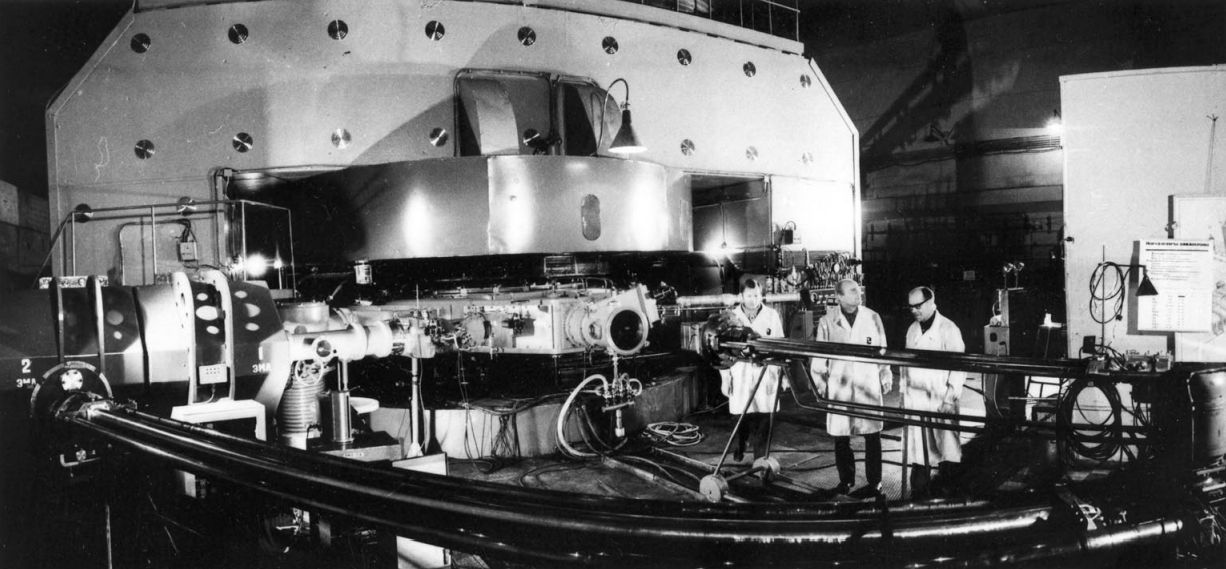60 years since U-300 cyclotron’s launch
News, 10 September 2020
60 years ago, the U-300 cyclotron was developed in the Laboratory of Nuclear Reactions of JINR. At that time, it was a unique heavy ion accelerator for research in the fields of nuclear physics and chemistry, as well as for applied research. On 9 September 1960, a significant event in the fields of physics took place: the U‑300 cyclotron produced the first beam of accelerated nitrogen nuclei with the energy up to 10 MeV/n.
The three‑meter U‑300 cyclotron was designed basing on the concept proposed by Academician G. N. Flerov and built at the Electrosila Plant in Leningrad, USSR. For the next 17 years, U-300 remained the most powerful cyclotron among other heavy ion accelerators operating in the world, both in beam intensity and in the diversity of accelerated ions.
Heavy ions opened broad prospects for new scientific directions in nuclear physics, such as the synthesis of new transuranic elements, the study of nuclear reactions with heavy ions, and the production of exotic nuclei in which new types of radioactive decay could be observed. For the first time in the world, 104 and 105 elements of the Periodic Table were synthesized at the cyclotron, as well as a new type of radioactivity, namely proton radioactivity, was discovered.
